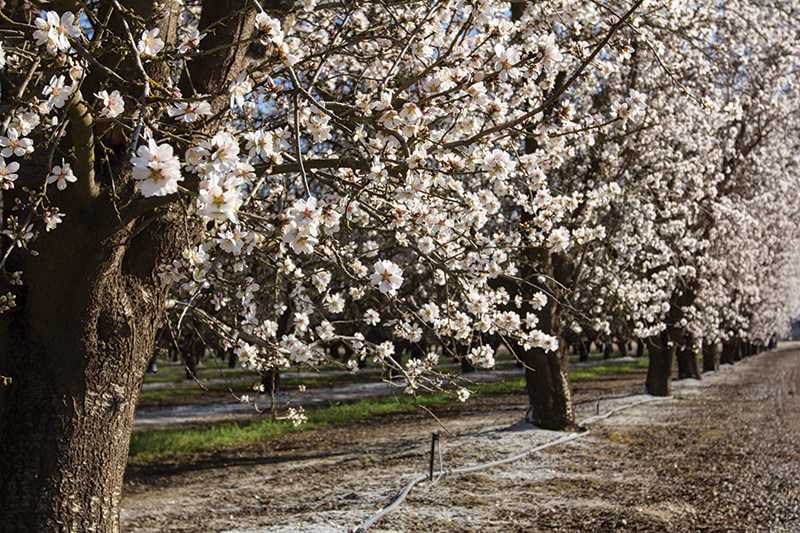While California’s almond market is booming, Mechel Paggi, director of Fresno State’s Center for Agricultural Business, said that the university’s almond production benefits from the positive aspects of the industry.

Photo by Roe Borunda / The Collegian
The reason the almond market is doing so well now is because there is a growing importance in markets developing in the Asia-Pacific region, Paggi said. Market growth in China has been especially dramatic. In Western Europe, the market for almonds has always been strong and steadily growing, similar to the market in the U.S.
“Almonds are sort of a poster child for the positive impacts of globalization in terms of the markets that are available,” Paggi said.
The export market for almonds has dramatically increased, and now the U.S. exports twice as many almonds to other countries as it consumes.
On the world market, California is by far the largest producer, harvesting 84 percent of the world’s commodity. Production takes place on more than 310,000 acres in California, of which less than 15,000 acres are non-bearing.
In California, almonds are the fourth-leading commodity of agriculture, behind hay, wheat and grapes.
Fresno State’s 62 acres of fully producing, mature almond orchards contribute to this success.
Paggi said Fresno State provides a benefit to the almond market in that it has the capacity to provide a venue to conduct research on production and processing.
Mark Salwasser, the agriculture operations employee who oversees the almonds orchards, said the orchards do provide great educational value. The orchard class, equipment class, irrigation class and tree production class all use the almond orchards for their course of study.
Salwasser also said students work in the almond fields everyday through different classes and internships.
“It’s a good commodity for the farm, and it helps the university further its educational mission,” Salwasser said.
A portion of Fresno State’s almonds is sold at the Rue and Gwen Gibson Farm Market, but the majority of the crop is sold to a wholesale buyer in a pool sale.
“Almonds are a very successful crop, both production-wise and financially,” Salwasser said.
The orchards at Fresno State produce five varieties of almonds. The two hard-shell varieties are Butte and Padre almonds. The three soft-shell varieties are Aldridge, Price and Nonpareil almonds.
The Nonpareil variety is a premium nut and preferred by buyers because it is a larger than other varieties, Salwasser said. Because of this, it tends to sell at a higher price.
The average price is $1.92 per pound for the grower.
“If you look to the future, it’s bright because of where market growth is occurring,” Paggi said.
Unforeseen changes can always affect the market, Paggi said. Factors that could hurt the almond market are a sudden disruption in the Asian economy or the unexpected increase in the value of the dollar.
“These are things that are beyond our control,” Paggi said.
In the next five to 10 years, markets in India and Asia are expected to increase. For the market in general, Paggi said there is plenty of supply and plenty of demand.





Kendall Barton • Feb 28, 2013 at 11:48 am
I wanted to offer you some updated information about the California Almond industry.
California has 760,000 bearing acres of almonds and nearly 15,000 non-bearing.
Almonds are the #1 agricultural export in California. They are also the second most valuable commodity in California after dairy.
If you have any questions, please don’t hesitate to visit http://www.almondboard.com or email me.